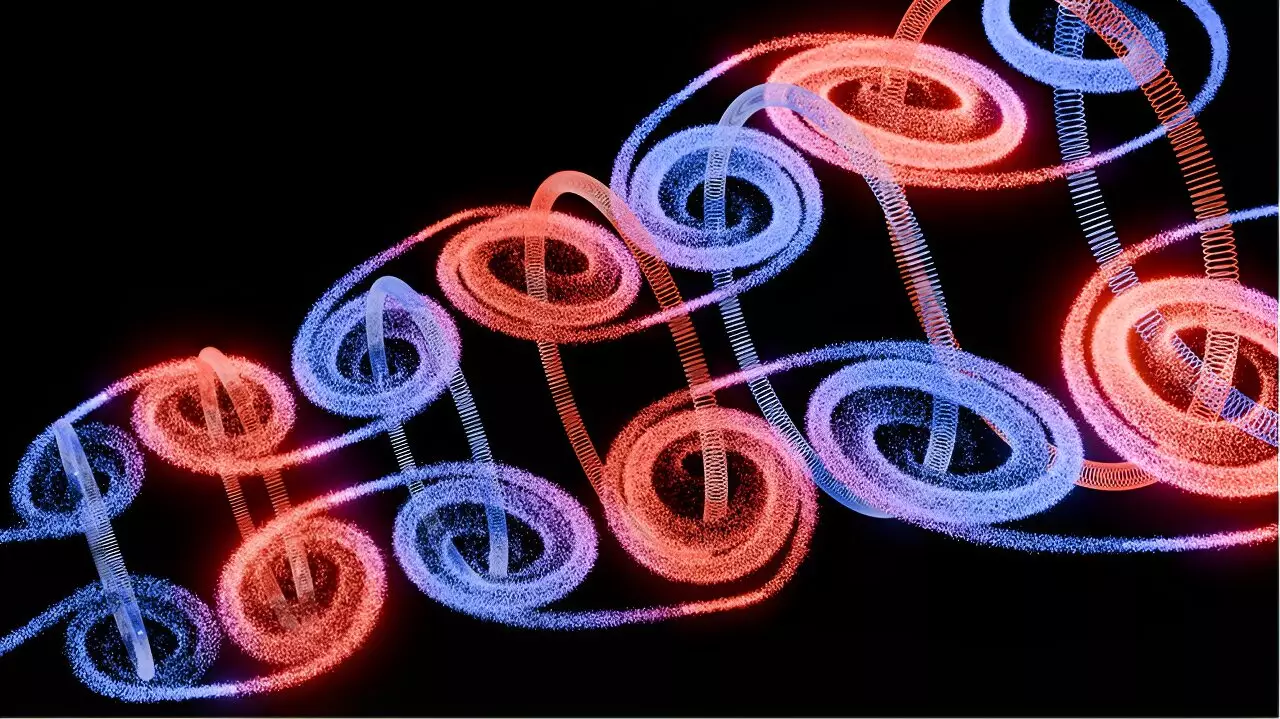A recent study published in Nature Communications by physicists from Singapore and the UK has unveiled an optical analog of the Kármán vortex street (KVS). The study reveals intriguing parallels between fluid dynamics and structured light energy flow. Lead author Yijie Shen of Nanyang Technological University introduces a novel type of light pulse with field structure resembling the Kármán vortex street, a pattern of swirling vortices known for its significance in fluid and gas dynamics.
The optical Kármán vortex street pulse, also known as nondiffracting supertoroidal pulses (NDSTPs), displays a robust topological structure similar to skyrmions in condensed matter. Unlike previous optical skyrmionic beams and pulses, the NDSTPs are not constrained by diffraction and can propagate over arbitrary distances without spreading. This unique characteristic opens up possibilities for applications in various fields such as light-matter interactions, super resolution microscopy, and metrology.
Skyrmions, topological particles proposed as a model of the nucleon by Tony Skyrme in 1962, exhibit magnetic vortices at the nanoscale with intricate textures. While traditional optical skyrmions in free space tend to collapse rapidly upon propagation, the newly introduced NDSTPs demonstrate the ability to maintain their skyrmionic field structures during propagation. This capability allows for the study of the dynamics of electromagnetic skyrmionic fields and the potential use of directed energy channels for information transfer applications.
The authors of the study suggest that the deeply subwavelength singularities of the NDSTPs could find applications in metrology and spectroscopy of toroidal excitations in matter. Moreover, the pulses could be utilized for long-distance information transfer by encoding data in the topological features of the pulses. This opens up opportunities for applications in telecommunications, remote sensing, and LiDAR technology, demonstrating the versatility and potential impact of the optical Kármán vortex street pulse.
The Kármán vortex street, a classical flow pattern characterized by swirling vortices of opposite circulations, has been historically significant for its beauty and power. The pattern has inspired scientific research and artistic depiction, as evidenced by paintings like the one at the Church of St Dominic in Bologne, Italy. The intersection of science and humanities is exemplified by the influence of the vortex street on the work of Theodore von Kármán and its portrayal in art.
Notably, the Tacoma Narrow Bridge incident in 1940, where vortex streets caused by improper design led to vibrations and resonance, highlighted the destructive potential of the Kármán vortex street. This event served as a wake-up call for the engineering community, emphasizing the importance of understanding fluid dynamics and flow patterns in structural design to prevent such disasters in the future.
The discovery of the optical Kármán vortex street pulse sheds light on novel applications of structured light in various scientific and technological domains. By drawing parallels between fluid dynamics and light energy flow, researchers have unlocked a new avenue for exploring the behavior of electromagnetic fields and utilizing them for advanced information transfer systems. The implications of this study extend beyond theoretical understanding to practical applications with real-world impact.


Leave a Reply